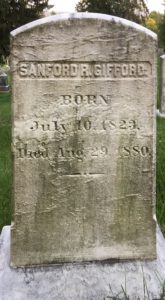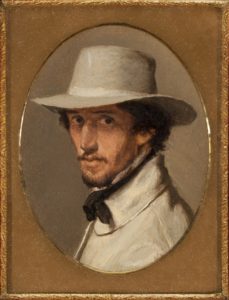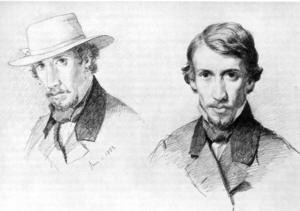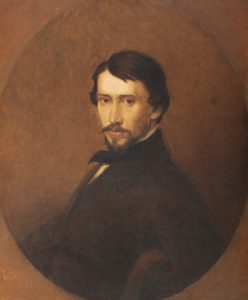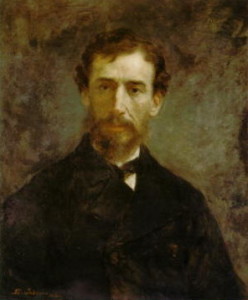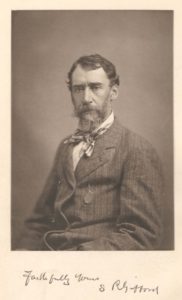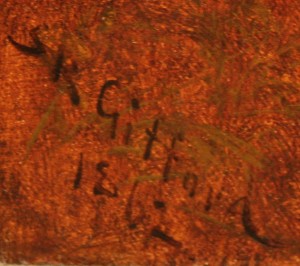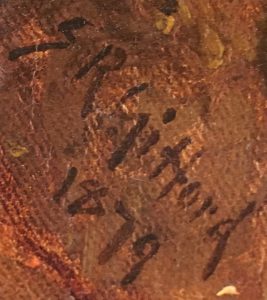Gifford was an important Hudson River School luminist. One of the few artists of the 19th century to attend college, Gifford studied from 1842 to 1844 at Brown University. In 1845, he left Providence, RI, for New York City to pursue a career in art. He studied in New York City under John Rubens Smith. A sketching trip to the Catskills and the Berkshires in the following year focused Gifford’s interest on landscape painting. He became an associate member of the National Academy of Design in 1850 and a full member in 1854, contributing regularly to their exhibitions. Gifford was in the White Mountains with Samuel Colman, Benjamin Champney, and Richard W. Hubbard as early as 1853, and again following his service in the Civil War, in 1865 and 1866. He made several trips to Europe, one from 1855 to 1857, another in 1859, and again from 1868 to 1870. A growing interest in western scenery led to his exploration of the Rocky Mountains in 1870 with fellow artists Worthington Whitteridge and John F. Kensett and prompted Gifford to make a second trip west in 1874 where he sketched along the coast from California to Alaska.
He exhibited frequently at the Brooklyn Art Association and kept a studio at the 10th Street Building in New York City from 1858 until his death. He also exhibited at the American Art Union.
He was elected to the Century Association in 1859. He was also a member of the Union League Club.
Gifford’s works have been preserved at the National Gallery, the Corcoran Gallery of Art, the New York Historical Society, the Metropolitan Museum of Art, the Art Institute of Chicago, and the Amon Carter Museum.
Gifford is buried in the Gifford family plot in Hudson, New York.
Gravestone
Images of Sanford Robinson Gifford
- Sanford Robinson Gifford (1823-1880) self portrait
- Sanford Robinson Gifford (1823-1880)
- Sanford Robinson Gifford (1823 -1880) 1857 self portrait
- Sanford Robinson Gifford (1823-1880) by Eastman Johnson (1824-1906)
- Sanford Robinson Gifford (1823-1880)
Signatures
- 1855
- 1859
- 1861
- 1862
- 1866
- 1869
- 1873
- 1879
References
New Hampshire Scenery
Who Was Who in American Art
